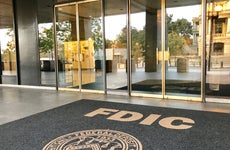What is a bank statement?

The Bankrate promise
At Bankrate we strive to help you make smarter financial decisions. While we adhere to strict , this post may contain references to products from our partners. Here's an explanation for .
A bank statement is a detailed record of all transactions that occurred on a bank account over a period of time, or “statement cycle,” which is usually a month.
A bank statement allows a customer to review all activity on their account, reconcile their balance, spot errors and identify potential fraud. It’s also useful for tracking spending, savings and for creating a budget. In addition, bank statements are usually required when applying for a loan, including a mortgage, and they come in handy at tax time for confirming income and expenses.
Banks send account statements electronically or via physical mail. Paper statements are becoming less common and banks might charge a fee to customers who want them. Many people view their bank statements using their online bank account or their bank’s mobile app.
What your bank statement includes
A bank statement contains a lot of information, including:
- The account holder’s name, address and account number.
- Beginning and end dates of the statement cycle.
- All deposits to the account during the statement cycle, such as direct deposits and interest earned, with deposit dates.
- All withdrawals from the account during the statement cycle, such as purchase transactions, automatic bill payments and ATM withdrawals, with transaction dates.
- All wire transfers into or out of the account, with corresponding dates.
- Credits to the account, such as a refund from a merchant or a bank fee that has been reversed – for example reversal of a nonsufficient funds (NSF) fee.
- The account balance at the beginning and end of the statement cycle.
- Canceled checks or stop payments.
- Dollar amount of any interest accrued during the statement cycle, with the annual percentage yield (APY).
- Any fees charged by the bank, such as NSF fees, ATM fees and paper statement fees.
- The bank’s customer service phone number and instructions for reporting fraud and errors.
If it’s a monthly statement for a credit card account, the customer will see the minimum payment due, the balance at the end of the billing period, the billing period dates, the payment due date, a summary of payments, credits and adjustments, any fees charged to the customer, the amount of interest charged, the customer’s credit limit, payment options and more.
How to get your bank statement
Bank customers have several ways to get their monthly statements.
Some customers get paper bank statements in the mail. It’s not uncommon for banks to charge a monthly fee for paper statements. For checking accounts, fees can go even higher if the customer wants images of the checks that have cleared. Wells Fargo, for example, charges Everyday Checking account holders $2 a month for images of the front of the checks and $3.50 per month for images of both the front and back of checks.
Many banks have been urging customers to “go paperless” and receive their statements online. Some banks notify their customers by email when their statements are ready to be viewed electronically. The customer then logs on to the online banking account they set up at their financial institution’s website. Electronic statements contain all the information that paper statements do, and they can be downloaded and printed or transferred onto a thumb drive or other storage device.
If the bank has a mobile app, monthly statements also might be viewable through the app.
One advantage of reviewing account history online is that customers can see pending transactions, such as debit card purchases that haven’t yet cleared the bank. Paper statements cannot give customers this kind of real-time information.
Some account information, such as a limited transaction history, might be available by calling the bank. But customers will not get nearly as much detail about their accounts over the phone as they can by reviewing monthly statements.
What to look for on a bank statement
When a customer gets their monthly bank statement, there are certain things they should check for.
Errors. Many people do not balance a checkbook or keep purchase receipts like they did in years past. Instead, they check their bank statement for erroneous charges or transactions. Customers who spot transactions they did not make, regardless of how small, should notify their bank immediately as this could be a sign of identity theft. Information about how to handle disputes with the bank should be outlined in the bank statement.
Automatic payments. Customers who have bills paid out of their account automatically should double-check payment amounts. It’s easy to lose track of how much is going out when payments are withdrawn automatically, especially if the amount fluctuates. Energy bills are an example of payments that can change every month.
Direct deposits. Customers who have their paychecks, Social Security checks or other payments directly deposited should make sure they appear on their monthly bank statements.
Account balance. Customers should make sure they are keeping enough in their accounts to avoid overdraft fees.
Spending habits. A bank statement gives a good picture of how someone is spending their money. A litany of restaurant transactions can help someone quickly see that a lot of their paycheck is going toward eating out. On the other hand, frugal customers can see how their money habits are growing their bottom line.
Interest earnings (if any). A monthly bank statement for an interest-bearing account will show how much interest the customer has earned. If it’s a credit card statement, it will show how much interest the customer is being charged during the billing cycle and total interest charges for the year.
Bottom line
A monthly bank statement is an important record that helps customers stay on top of their finances. It also helps them spot suspicious transactions and possibly avoid identity fraud.
Unless someone always uses cash, a bank statement is a good tool for planning a budget because it gives the full picture of how much money is going out versus how much is coming in. It can help a customer determine how much they can afford to set aside for emergencies and other savings goals.
A bank statement is worth keeping as a record in case a customer changes banks, and because banks might make access to them limited after a few years.
— Freelance writer Hana LaRock contributed to a previous version of this article.
Related Articles



